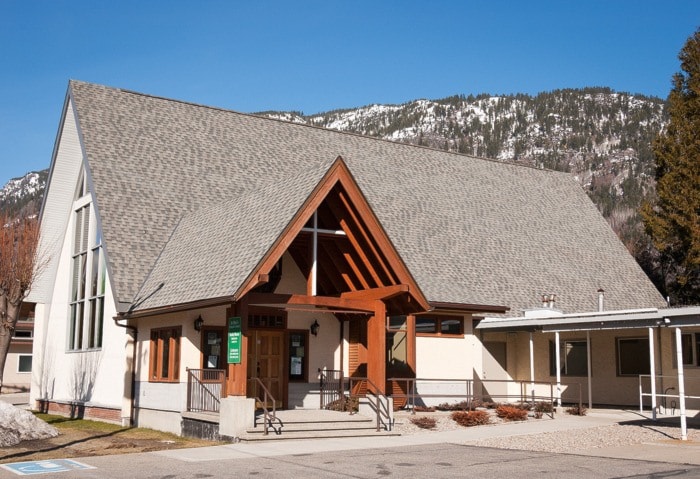St. Rita's church in Castlegar, a parish of the Roman Catholic Diocese of Nelson, was struck by arson four months ago today, destroying a building that had been home to weddings, funerals, baptisms and much prayer.
Three days after the blaze, Lee Wilding of Castlegar was arrested. He and a female — also from Castlegar and who cannot be named under the provisions of the Youth Criminal Justice Act — were each charged with two counts of arson relating to the fire at the church and another the same night which destroyed a vehicle owned by the Red Cross at Kinnaird Community Church.
Though the building is gone, the church community remains strong and a path forward is being forged.
"A lot of people were very upset and distressed because they really felt a loss. Not only that, there was the fact that we didn't know why the events had happened," said The Reverend Father David John on Friday, July 19.
John said people may have felt different if the church had, for example, been hit by lightning but when the cause was determined as arson it was unsettling.
"It made it very difficult because [we asked] was it an attack against us or was it just random?", he said. "It's sort of odd when a complete stranger does something that impinges your life because you just ask why."
He added if there's a why you can get past that question and get on with healing.
John said it was recognized early on that the way forward had to involve all church members. The Diocese, erected February 22, 1936 and serving parishes in the Kootenays and the Okanagan, currently ministers to approximately 78,000 Catholics.
After the fire, decisions were made to convert some of the remaining space to other uses, providing continuity of the many services offered.
One classroom is now a temporary office, another has become a weekday chapel with seating for about 30 and the hall has become the location for mass.
John said he's not rushing through the rebuild because he wants people to understand what a church is and what is done within it.
"The hall we've got set up for our liturgy at the moment is much more attuned to the type of liturgy that I celebrate than a long, thin church was," he said. "I actually feel much more comfortable because there was 20-something rows there [in the former church] and we've got five rows here; I can have eye contact with everyone."
He gave other example of finding positives in the face of adversity.
"During funerals in the old church we would have to move the casket to the side as the family came in and then put it back in the centre; when we got to communion, we would have to move it again where the choir normally sits. Here, we have all the space we need; we put it there and don't move it. Baptisms, too; we don't have to move the font."
John said it was important in the process of rebuilding, that all of the aspects of the way the church celebrates their religious beliefs were examined.
"If we had started designing the church the day after the old one burned down, we would have built the old one again," he said. "It would have been the primary model in people's minds."
There are differences with mass being set up in the hall. The entrance door, for example, is on the same wall as the altar, so anyone arriving late can be seen by all. A number of people have told John this can be both embarrassing and distracting.
His measured response is to look at the situation from two vantage points: are they attending church as friends and family or are they attending a theatre presentation?
He observed that when you sit down to share a meal with friends or family and someone arrives late, the host would say, "Do come in," and everyone would feel more celebratory and more complete because an extra member of the community was present.
"We should be celebrating if people come in late," said John. He said the congregation is a community where everyone is important.
He said on a good weekend, about 200 people come through the doors and recognizes the summer months are often used for holidays. Church members are being asked, if visiting other churches, to take pictures of specific elements they like and send them in via email for consideration in the design of the new building.
John said he would like to forgo the traditional architect and tender process.
"We want to get a specification, not a design," he said. "So many seats, these features and then throw it out to tender and say we have this amount of money, what can you do with this?"
The hope is to get three or four outline ideas they can look at and decide upon.
As far as a rebuilding timeline, John said the former building was insured but it's "not a bottomless pit."
Negotiations with the insurance company are ongoing. Quotes are being sought on the cost of rebuilding the former building up to code, as the policy covers replacement, not a new building.
"It's not an easy process but that's where we are at the moment," said John.
Keeping the congregation informed is important, he said, as there will be a lot of practical things involved once at the building phase.
"I'd like to see us break ground after the winter," said John. "And by the end of the summer have a building we can get in to."
